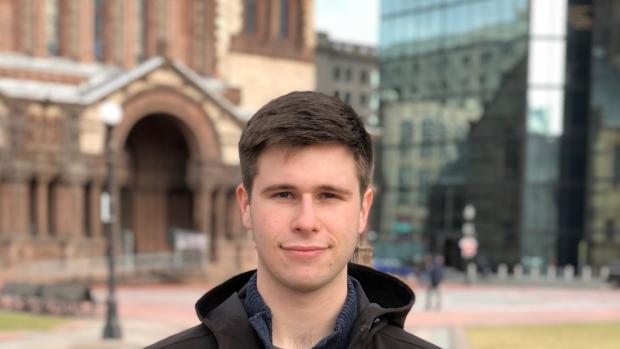Prestigious award to send doctoral student to Argonne Lab to shed light on batteries

Jason Lipton, a Ph.D candidate in chemical and biomolecular engineering is heading to Argonne National Lab to research how exposure to photons affects recharging of lithium-ion batteries
It’s not just a figure of speech to suggest that Jason Lipton, a Ph.D. candidate in the Department of Chemical and Biomolecular Engineering at NYU Tandon is about to put the spotlight on lithium ion batteries. The U.S. Department of Energy (DOE) Office of Science Graduate Student Research (SCGSR) has selected Lipton, to receive a prestigious research award that will allow him to research how light affects energy storage in lithium ion batteries.
Lipton, one of only 70 recipients of the Graduate Student Research Award, which is bestowed on the strength of a graduate student’s accomplishments and the merit of their SCGSR research proposal, will get to do experimental research at the DOE’s Argonne National Laboratory (ANL) near Chicago.
“The SCGSR program is a great program because it gives doctoral students the unique opportunity to build a collaborative research relationship with DOE researchers,” said André Taylor, professor of chemical and biomolecular engineering, and Lipton’s graduate advisor. “This relationship can further enhance the students’ thesis work because they have access to instruments that may only be available at a National Laboratory.”
Lipton, who is beginning his third year of a five-year doctoral program under Taylor, explained that light influences operational characteristics of a battery, including how quickly they charge. “The Li-ion battery charging rate is sped up when electrode material is exposed to light because photons induce an electronic effect which increases the charge, resulting in the fast ejection of Li cations from the cathode structure.”
Which might be an apt metaphor for how Lipton’s research will benefit from exposure to the ANL expertise and gear.
Christopher Johnson, Argonne Distinguished Fellow and Group Leader at Argonne in the Electrochemical Energy Storage Department will serve as mentor and host for Lipton. The discovery of photo-assisted fast charging was recently reported in the publication Nature Communications (DOI….) by Dr. Johnson’s group.
“They have very sophisticated light emission technologies and battery testing equipment and expertise doing just these sorts of light tests,” Lipton said, adding that a particularly useful piece of equipment is the ANL’s Advanced Photon Source, a mile-long synchrotron, a special kind of particle accelerator often used for fluorescence studies.
The synchrotron is ideal for identifying structural features of materials and for doing x-ray crystal studies “in operando” — essentially in real time, while a catalysis process is at work. Thus, Lipton will be able to observe structural changes to a battery electrode during charge or discharge while it is exposed to light or in the absence of light.
He said that the research could lead to solutions to one of the major bugbears of rechargeable batteries: the long charging times.
“This is why Tesla has been developing ‘superchargers’ to reduce the charging time of their cars for example,” Lipton explains. “We have some preliminary data that we get over two-times shorter charging time when some battery electrode materials are exposed to light, so if optimized, this has the potential to reduce ‘range anxiety’ by electric car drivers — and ultimately great adoption of EV’s — by reducing the amount of time necessary to charge their cars.”




